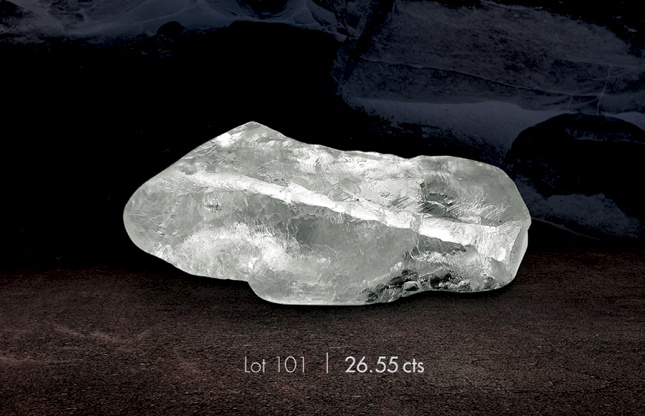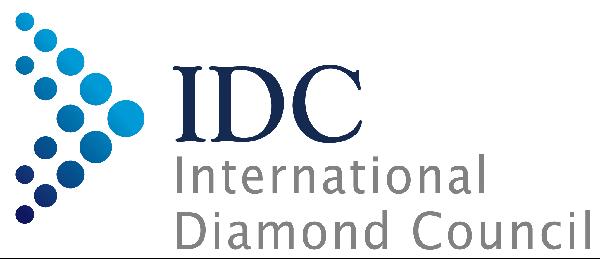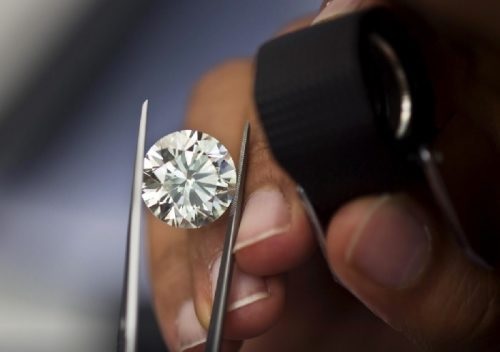The DCLA is the only internationally affiliated and locally accredited diamond grading laboratory in Australia. Although there are other highly respected laboratories internationally, the DCLA is the only recognised diamond grading laboratory located in Australia, making it easier for Australians to deal with any problems or queries as they arise. In addition, DCLA is the only diamond certification laboratory to stand behind our work and offer a full-replacement Diamond Grading Guarantee.
How do I know that my diamond certificate or diamond grading report is from an independent laboratory ?
Ask the jeweller if the diamond certificate comes from an independent diamond laboratory or if it produced by a diamond merchant or retailer, then do your research. Make sure the certificate is issued by the DCLA or another highly respected diamond grading laboratory; DCLA is the only diamond grading laboratory worldwide to offer a full-replacement Diamond Grading Guarantee.
Why is it important that my diamond certificate come from an independent diamond grading laboratory?
If you were buying a house would you accept an inspection from the owner? Of course you wouldn’t, you would insist that the inspection be done by an expert with no financial interest in the transaction. This situation is the same when buying diamonds. Be careful of diamond reports produced in-house by diamond merchants or retailers, as the report may be inaccurate and overstate the actual grading of the diamond.
If the diamond has been certified is it important that I receive the original diamond certificate or diamond grading report?
It is very important to get the ORIGINAL diamond grading report. Summaries or photocopies are not sufficient, and will not protect you if there is a problem later.
Which one of the 4 C’s of diamond grading is the most important ?
All of the 4 C’s are equally important; however, many people consider diamond cut to be the most important diamond characteristic, because even if a diamond has perfect colour and clarity, a diamond with poor cut quality will have dulled brilliance and life.
Kimberley Diamonds closes its last mine
Controversial Australia-based miner Kimberley Diamonds has put its last remaining diamond mine into administration after it failed to secure fresh funding.
Kimberley, which avoided an estimated $40 million clean-up bill after it walked away from its Ellendale mine in Western Australia’s north, shut its Lerala operation in Botswana last week and placed the subsidiary responsible for the project into administration.
Kimberley said in a statement on its website that its subsidiary Lerala Diamond Mines had “no choice” but to place itself into administration after the parent company was unable to strike a new financing deal.
It had earlier stopped day to day operations at Lerala pending an overhaul of the mine’s diamond processing plant. “The successful completion of this performance improvement plant required further funds to be provided by investors and despite considerable progress being made on implementing these improvements, all of the required funds have not been forthcoming,” Kimberley said. “Kimberley has been in discussions with investors regarding further funds for some time, however to date no agreement for further and sufficient funding has been reached and KDL has been forced to cease providing financial support to Lerala.” But the collapse of Lerala won’t kill off the parent. Kimberley said it remained in discussions with investors for further funding and was “exploring corporate restructuring options”.
Kimberley delisted from the ASX earlier this year after a chequered history. The stock enjoyed a charmed run early on, surging from 11c in 2012 to $1.30 in 2013, but fell spectacularly in 2014 when it revealed it had failed to secure a price increase from global jeweller Tiffany & Co that it had already factored into its profit forecasts. Its shares never recovered, and last traded at just 0.7c prior to its delisting.
The company, chaired by former stockbroker Alexandre Alexander, also came under fire for its handling of the closure of Ellendale. The liquidators appointed to the Kimberley subsidiary that held Ellendale used a legal loophole to shift responsibility for the clean-up to the state government’s industry-funded mining rehabilitation fund.
The rehabilitation costs at Ellendale have been estimated at between $28m and $40m. WA’s new Mines and Petroleum Minister Bill Johnston has flagged an overhaul to prevent “rogue elements” taking advantage of the MRF.
Source: TheAustralian.com.au
De Beers taps into polished diamonds market with first-time auction
Anglo American’s De Beers, the world’s largest rough diamond producer by value, has decided to begin selling its own polished diamonds in auctions for the first time in its history.
The pilot auction, scheduled for June, will include a wide range of polished stones manufactured directly from the company’s own rough diamonds.
“The pilot auction, scheduled for June 29, will include a wide range of polished stones manufactured directly from De Beer’s own rough diamonds.” All the polished rocks will carry grading reports from both the International Institute of Diamond Grading & Research (IIDGR) — De Beers’ in-house grading unit — and the Gemological Institute of America (GIA).
“We are interested in testing the level of demand from polished buyers for diamonds that have a clear and attractive source of origin, and that offer the assurance of product integrity that dual certification provides,” Neil Ventura, the miner’s executive vice president of auction sales, said in the statement.
If successful, the process would provide De Beers with more insight into the polished market, while also helping consumers fill gaps in supply or inventory if they were unable to find goods at the company’s rough auctions, he added.
All registered De Beers auction buyers will be eligible to bid in the first sale, which takes place on June 29.
Source: Mining.com
Gem Diamonds recovers 80 carat rough diamond
Another D colour Type II diamond weighing 80 carats has been recovered.
Shares in Gem Diamonds spiked on Thursday after the miner announced it had recovered one of the highest quality stones to come out of its Letseng mine in Lesotho.
The discovery of this 80 carat diamond comes less than a month after the miner announced the recovery of a 114 carat rough diamond. And two years after Gem Diamonds found a 357 carat rough diamond, which sold for $19.3 million.
Gem Diamonds has recovered four of the 20 largest white gem quality diamonds ever recovered, which makes of the Lesotho mine the world’s highest dollar per carat kimberlite diamond operation.
De Beers Profit Jumps as Diamond Market Stabilises

Profit more than doubled for De Beers last year as trading conditions in the diamond-manufacturing sector improved and inventory levels stabilized.
Underlying earnings jumped to $667 million in 2016 from $258 million a year earlier, parent company Anglo American said in a statement Tuesday. This came as revenue grew 30 percent to 6.07 billion, reflecting a 37-percent hike in rough-diamond sales to $5.6 billion.
The midstream of the diamond industry returned to buying rough after a 2015 slump in demand that resulted from oversupply of polished and inflated rough prices. Manufacturers started working down their polished inventories in the second half of that year before restocking their rough supplies in 2016.
De Beers also lowered prices, with its rough-price index declining 13 percent across 2016. The miner consequently reduced its rough stockpiles during the year, management said. De Beers production fell 5 percent to 27.3 million carats, while sales volume leapt 50 percent to 30 million carats, meaning it sold a larger volume of stones than it mined. “2016 generally was a much better year for the diamond industry,” said Bruce Cleaver, De Beers chief executive officer. “The midstream performed much better than 2015, largely as a result of the strong and decisive action we took in 2015 to reduce production in accordance with demand.
The fruits of that tough action we took in 2015 was seen through 2016.” The company projected production would rise to 31 to 33 million carats in 2017, “because we see the market has recovered from where it was at the end of 2015,” noted Cleaver. The company maintained a conservative outlook for the diamond jewelry market given prevailing global macro-economic conditions and geopolitical risk.
Performance will be dependent on a number of macro issues, including the attitude of the new U.S. administration, the strength of the dollar, continued recovery in China and the impact of Indian demonetization, Cleaver explained. “All other things being equal, we think diamond demand will continue to grow along with GDP growth,” he said. Source: diamonds.net
Bain Capital and Bow Street to acquired Blue Nile
In a surprise announcement, online jeweller Blue Nile has entered into an agreement to be acquired by an investor group managed by Bain Capital Private Equity and Bow Street LLC.
Bain Capital and Bow Street will acquire 100 percent of the outstanding shares of Blue Nile common stock.
The cash deal is valued at $500 million, Blue Nile stockholders will receive $40.75 in cash per share, 34 percent over Blue Nile’s closing price on November 4.
Blue Nile’s board of directors approved the deal unanimously, and recommended that stockholders vote their shares in favour of the transaction.





